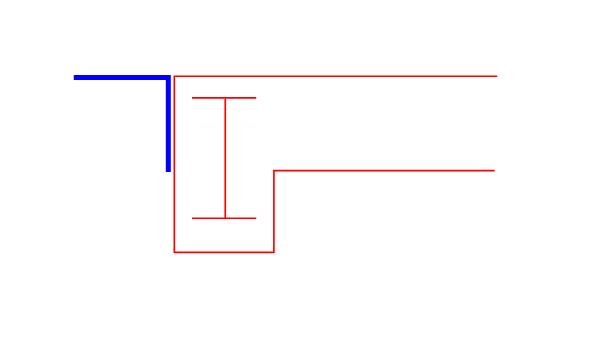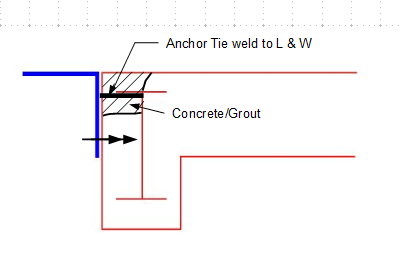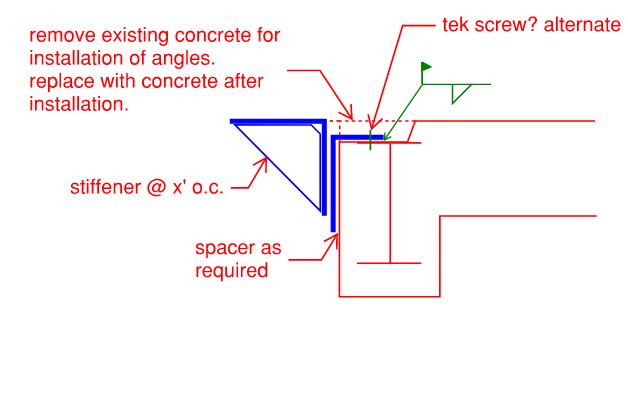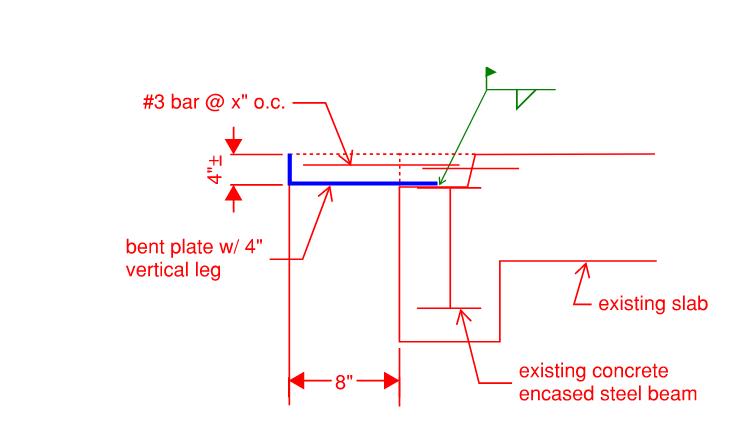BSPE90
Structural
- Aug 30, 2017
- 22
So I've got an existing concrete encased steel beam (red in the image). An additional 8" needs to be added to extend the floor to support a non-loading bearing partition wall. One suggestion was to attach an 8" angle (in blue) to the side of the existing concrete. How would one go about making a structurally sound connection to the existing beam? Would a row of adhesive anchors anchored into the concrete be sufficient or does it necessarily have to tie into the steel?





